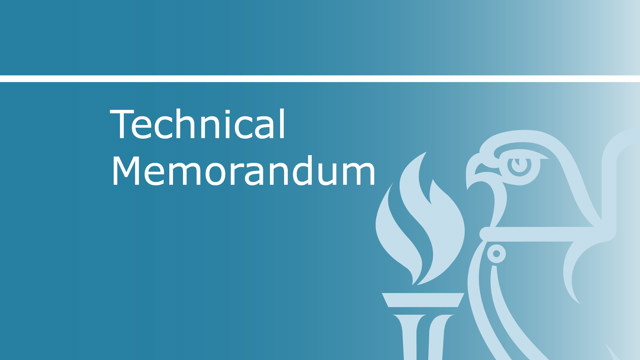
Please note that TM51 is currently under review.
Ground source heat pumps are heat generating systems that take heat stored in the surface of the earth for use in space and water heating systems. Heat pumps can be used in combination with radiators or underfloor heating systems and can provide domestic hot water. The heat is transferred from the ground to the heating system by circulating a fluid, usually a mixture of water and antifreeze, around a loop of pipe buried in the ground.
Ground source heat pumps offer a number of benefits, including lower carbon emissions, reduced fuel bills, a cost-effective off-gas grid alternative to oil, solid fuel or electric radiators. Heat pumps powered by a renewable energy source are completely renewable, and are a good source of renewable heat. Interest in this technology has grown in the UK over the past decade.
The purpose of this Technical Memorandum is to provide information for practitioners to enable ground source heat pumps to be properly applied, and their environmental and economic potential to be realised. Specifically it aims to provide:
- understanding of the technology and its application
- information on the availability and comparability of systems
- clarity on how gshps comply with building regulations, SBEM and Environment Agency regulations
- understanding of the design, integration and procurement process
- information on maintenance, training and resources
- information on real performance with case studies.
1. Introduction
1.1 Purpose of this publication
1.2 How ground source heat pumps save energy and carbon
1.3 Objectives and scope
2. The ground as an energy source
2.1 Introduction
2.2 Geothermal energy
2.3 Ground coupled heating and cooling systems
2.4 System categorisation
2.5 Thermal behaviour
2.6 Ground temperatures in the UK
2.7 Geological aspects of closed loop systems
2.8 Geological aspects of open loop systems
2.9 Use of the ground as a thermal energy store
2.10 Regulatory issues
3. Ground heat exchanger systems
3.1 Introduction
3.2 Closed loop systems
3.3 Open loop systems
4. Ground source heat pump units: technology and design
4.1 Introduction
4.2 The vapour compression cycle
4.3 Coefficient of performance
4.4 Minimisation of temperature lift
4.5 Standard rating conditions
4.6 Cycle enhancements
4.7 Reversible heating and cooling systems
4.8 Absorption cycle
4.9 Power supply and modulation
4.10 hfc refrigerants
4.11 Non-hfc refrigerants
4.12 Heat exchangers
4.13 Compressors
4.14 Expansion devices
4.15 Refrigerant leakage
5. Application and design
5.1 Introduction
5.2 Heat pump systems integration and design
5.3 Controls
5.4 Applications where heating and cooling loads exist
5.5 Heating only systems
5.6 Cooling only systems
5.7 Domestic hot water
5.8 Other heating and cooling loads
5.9 Thermal balance in gshp systems
5.10 Underground thermal storage energy storage (utes)
6. Performance and cost comparison
6.1 Introduction
6.2 Performance of gshp and potential savings
6.3 Performance measurement
6.4 Running cost and savings
6.5 Capital cost
6.6 Maintenance
6.7 Viability of installations
6.8 Other reasons for choosing gshp
7. Procurement and design
7.1 Introduction
7.2 Alignment with overall project procurement
7.3 Common issues to be addressed
7.4 Packaging for procurement
7.5 Design process and parameters
8. GSHP regulation and planning
8.1 Introduction
8.2 Building Regulations
8.3 Planning
8.4 F-Gas Regulations
8.5 Regulatory issues
8.6 The Renewable Heat Incentive (RHI)
9 Installation, commissioning and maintenance
9.1 Installation
9.2 Testing and commissioning
9.3 Maintenance
10 Conclusions
Appendix A1: Glossary of terms and abbreviations
Appendix A2: Thermal response testing and hydrogeological issues
A2.1 Thermal response testing
A2.2 Hydrogeological issues for open loop systems
Appendix A3: Case studies
A3.1 Case study 1: Domestic ground source heat pump
A3.2 Case study 2: Klina Hospital (Antwerp, Belgium)
A3.3 Case study 3: One New Change
A3.4 Case study 4: B&Q New Malden
Principal author: Graeme Maidment (London South Bank University)
Task Group
Chair: Graeme Maidment (London South Bank University)
Members: Tony Bowen (Heat Pump Association); Chris Davidson (GI Energy Ltd.); Tony Day (International Energy Research Centre); Hywel Davies (CIBSE); Andy Howley (LoopMaster Europe Ltd.); Guy Hundy (Aleph Zero Ltd.); Martin Preene (Golder Associates); Rosemary Rawlings (BRE); Miriam Rodway (Institute of Refrigeration); Terry Seward (Heat Pump Association); Richard Shennan (Mott MacDonald Ltd.)
Referees: Brian Agnew (Northumbria University); Simon Rees (De Montfort University); Li Shao (De Montfort University)